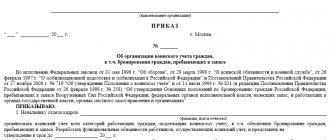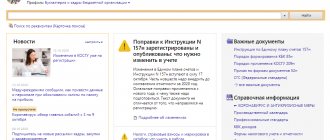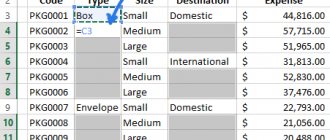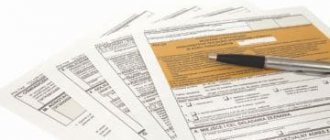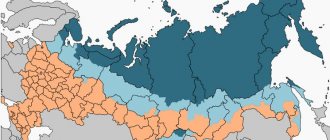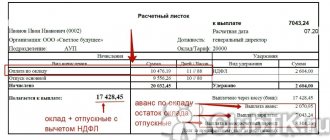The Capital Amnesty Law (140-FZ) requires the declarant (the person wishing to use the law) to fill out a special declaration. Particular attention is required from the declarant, in the case of declaring participation in foreign companies - Amnesty of CFC capital.
Filling out a special declaration on CFC differs from other types of participation of declarants in the management of foreign companies. The Capital Amnesty Law distinguishes between:
- Participation in the authorized capital of a foreign company
- Ownership of securities of a foreign company
- Nominee ownership of a foreign company
- Ownership of a controlled foreign company (CFC).
At the same time, participation in the authorized capital of a foreign company and ownership of a CFC are practically the same, but for the purposes of the capital amnesty law they must be declared differently.
Declaring ownership of a CFC under the capital amnesty law requires providing information about two types of foreign structures:
- Information about a foreign organization recognized as a controlled foreign company (Sheet D of the special declaration);
- Information about a foreign structure without forming a legal entity recognized as a controlled foreign company (Sheet E of the special declaration).
The capital amnesty law itself contains the most general definition of the concept of CFC, and does not share this attribute for a foreign organization and a structure without the formation of a legal entity: A controlled foreign company is a foreign company in respect of which the declarant is a controlling person on the date of submission of the special declaration.
The concept of a controlling person of a foreign company is not disclosed in the capital amnesty law. At the same time, the declaration of ownership of a CFC, according to the capital amnesty law, is prescribed only for cases of ownership of foreign companies in addition to the direct participation of an individual in the capital through ownership of shares, interests and (or) shares in the authorized (joint) capital of such companies) (clause 2 Part 1, Article 3 of Law 140-FZ).
For cases of direct participation in foreign companies (not CFCs), declarants must submit information about participation in the authorized capital of a foreign company, or ownership of securities of foreign companies.
What is it for?
The employer needs a declaration of a special assessment of working conditions to reduce the amount of insurance premiums for employees who do not work in dangerous or harmful conditions. In addition, employees working in safe conditions do not have to be paid extra for hazardous work. This does not mean that you should save on your employees. This suggests that it is necessary to create jobs that comply with state standards for the protection of life and health. In this case, both the employees are healthy and it is easier for the employer financially.
However, there are positions that are initially included in the lists of harmful or dangerous (for example, everyone who works underground), and no matter how you look at it, nothing can be done about it, a report to the labor inspectorate on a special assessment of working conditions in relation to these no jobs available for rent. But for these jobs, additional insurance premium rates are established, which amount to up to 8% (hazardous working conditions).
| Working conditions | Class | Rate |
| Optimal | 1 | 0 |
| Acceptable | 2 | 0 |
| Harmful* | 3.1 | 2 |
| 3.2 | 4 | |
| 3.3 | 6 | |
| 3.4 | 7 | |
| Dangerous | 4 | 8 |
* The establishment of classes of working conditions is determined by the methodology approved by Order of the Ministry of Labor No. 33n dated January 24, 2014.
IMPORTANT!
It is allowed to use the results of a special assessment only after the State Tax Inspectorate sends the report to the Ministry of Labor according to the SOUT, and it enters it into its information system (see paragraph 2 of Article 7 of Federal Law No. 426-FZ of December 28, 2013).
In order to reduce the hazard class, they purchase and issue to workers new and modern personal and collective protective equipment, conduct an unscheduled special assessment and lower the hazard class (legislation allows this, with the exception of class 4, this class is not reduced), therefore, the amount of deductions will also decrease ( from 7% (hazard class 3.4) to 2% (hazard class 3.1)). Job evaluation is an activity that is required not only by law, but filing a declaration on SOUT to the State Labor Inspectorate is the responsibility of the employer in accordance with paragraph 1 of Art. 11 of Federal Law No. 426-FZ of December 28, 2013, but also for economic reasons.
Use free instructions from ConsultantPlus experts to conduct a special assessment of jobs in accordance with all the rules.
Should I compose it myself according to the instructions or contact a special company?
Do you need to do this yourself? As you can see, there are a large number of ND. When filling out each of them there are subtleties and nuances, it is quite easy to get confused and formulate the document incorrectly. Therefore, many people prefer to turn to specialists for help .
As a rule, companies that help prepare tax returns for the year or other period are located right in the tax office building. The advantages are obvious: saving your own money, time and nerves.
The downside is the costs. The rules for filling out ND are open, so you can figure everything out yourself, without the help of a tax agent.
You just need to spend some time to understand the issue. On the website of the Ministry of Finance you can find detailed instructions on how to fill out the ND .
Submission order
Where to submit
If, based on the results of a special assessment, the organization has jobs with 1st or 2nd class, then the management is faced with the question: when and where to submit the declaration on SOUT in 2021 in order to avoid fines and reduce the costs associated with paying fees for injuries. The declaration is submitted to the territorial body of the state labor inspectorate (where the enterprise is registered), or, more simply, the State Labor Inspectorate. The deadline for submission is 30 days from the date of approval of the report based on the results of the SOUT.
How to submit
The documents are submitted by the employer represented by the general director or his authorized representative in one of the following ways:
- personal (visit the state inspection and submit documents on paper);
- in electronic form on the official website of the Federal Labor Service (in this case signed with an electronic digital signature);
- through Russian Post (the same as in person, but you don’t have to travel anywhere).
The submission of the SOUT declaration to the labor inspectorate is regulated by Appendix No. 2 to Order of the Ministry of Labor No. 80n dated 02/07/2014, and the form is regulated by Appendix No. 1 to the same order and is submitted to the State Labor Inspectorate within 30 days from the date of approval of the report. If documents are filled out incorrectly or lack necessary information, they will be returned for revision. If everything in the form is correct, then the labor inspectorate is obliged to accept the document and register the declaration within ten working days.
In relation to workplaces that are included in the lists approved by Resolution of the Cabinet of Ministers of the USSR No. 10 of January 26, 1991 (working in them gives the right to early assignment of an old-age insurance pension, upon entering work, employees are immediately provided with guarantees and compensation for working with harmful or hazardous working conditions, or based on the results of previously conducted certification of workplaces, harmful and (or) dangerous working conditions were established), a declaration of conformity to a special assessment of working conditions is not submitted, even if the working conditions there are optimal or acceptable taking into account the personal protective equipment used and collective defence.
Grounds for refusal of registration
The certification body may refuse to register the DS to the applicant, and will notify him of this by sending a notification (electronically or on paper). Or deliver the notice to the applicant in person.
The grounds for refusal to register a DS are presented in the figure:
If the reasons for which the registration of a DS was refused are removable (for example, the declaration is not drawn up in the prescribed form or there are not enough supporting documents), the shortcomings are eliminated and the registration procedure begins anew.
Filling Features
When filling out the document, you should be guided by the provisions set out in Letter of the Ministry of Labor No. 15-1/B-724 dated June 23, 2014, the main requirements are:
- the full name of the employer and address are indicated in strict accordance with the statutory documents (if information is submitted for workplaces located in a branch without forming a legal entity, the address is indicated not by the branch, but by the main division);
- the names of positions or works of employees whose places are declared are indicated from the special assessment card of this official place;
- the number of employees is taken from the special assessment card (section 3 of the report);
- individual workplace numbers are taken from the first column of the list of official workplaces at which the special assessment was carried out (section 2 of the report);
- similar jobs are marked with the letter A, according to information from the 4th column of the list of section 2 of the report;
- In addition to the details of the expert’s opinion, it is necessary to indicate his last name and initials.
If in the next 5 years an accident does not occur at the workplaces specified in the declaration or the employee does not acquire an occupational disease (which is established by the medical commission), the declaration of the results of the SOUT is extended for the next 5 years. If an accident occurs or other reasons appear (the full list is indicated in Article 17 of Law No. 426-FZ), the employer will have to organize an unscheduled special assessment, and the document will be canceled.
Results
The Declaration of Conformity of the Customs Union is drawn up in a single form approved by the decision of the Board of the Eurasian Economic Commission.
It must be registered in a unified register. To do this, the applicant is required to collect a set of documents and submit it along with the declaration and application to the certification body. After this, the declaration is registered or the applicant is notified of the refusal to register, indicating the reasons for the refusal. You can find more complete information on the topic in ConsultantPlus. Free trial access to the system for 2 days.
What is an updated declaration
From May 1, 2021, declaration of compliance of working conditions with state regulatory labor protection requirements is carried out in relation to workplaces whose working conditions meet the first or second class. Until this time, the declaration was submitted exclusively for first-class jobs, but Federal Law No. 136-FZ of May 1, 2016 corrected the situation. Since filing a declaration for jobs with 1st and 2nd class is required by law, employers were forced to submit an updated declaration. Currently, if, based on the results of the assessment and labor assessment, optimal or acceptable working conditions are established for newly organized workplaces, then a clarifying declaration will have to be submitted to the State Labor Inspectorate.
Who is obliged to take
Expert opinion
Ilyin Ivan Pavlovich
Legal consultant with 6 years of experience. Specializes in the field of civil law. Recognized legal expert.
Before moving on to step-by-step instructions for filling out 3-NDFL, we will consider the key requirements for this tax reporting form. Let’s determine who, when and how is obliged to report to the Federal Tax Service:
- Private traders and individual entrepreneurs, that is, those citizens who do business independently or carry out private practice.
- Citizens recognized as tax residents in the reporting period and who received income outside the Russian Federation. That is, these are those individuals who stayed in Russia for at least 183 days a year.
- Persons who sold real estate, land plots or vehicles during the reporting period.
- Citizens who received income in the form of lottery winnings, valuable gifts and other income exceeding the maximum permissible limit established for such types of income.
- Persons who received income in the reporting period under work contracts or civil contracts.
- Individuals applying for tax deductions (property, professional, social or treatment).
Last news
The government has decided to introduce indefinite validity of SOUT declarations. Officials submitted a corresponding bill to the State Duma for consideration. Now this document is valid for 5 years from the date of entering information about the results of the special assessment into the information system for recording the results of the special assessment. If during this period an industrial accident occurs in the organization or an employee is diagnosed with an occupational disease, the declaration is terminated. If such situations do not arise, its validity is automatically extended for another 5 years, and the employer is required to conduct a second special inspection after 10 years. He does this at his own expense.
If the government amendments are approved, employing organizations will be able to save on special labor costs. The authors of the initiative note that the requirement to carry out a repeated labor safety assessment when working conditions have not changed and there are no violations is redundant. Its abolition will have a beneficial effect on the administration of labor protection requirements and the financial position of organizations.
Registration nuances
No more than 5 days are allotted for reviewing documents and registering a DS from the moment the certification body receives a package of documents from the applicant (clause 8 of Decision No. 41).
When a 5-day limitation period applies for tax purposes, find out on our website:
- “The period for correcting SZV-M has been reduced from 2 weeks to 5 days”;
- “There are less than 5 days between prepayment and shipment - should I prepare an advance invoice?”.
The DS is considered registered from the moment it is assigned a registration number.
It is prohibited to change a registered declaration. If it becomes necessary to make changes, the applicant must accept the new DS and register it in the usual manner (as described above).
The following materials describe the procedure for making corrections to accounting and personnel records:
- “Corrections in the cashier-operator’s journal - sample”;
- “How to make a correction in a work book - sample 2017”.
Page 002
After completing Page 001, move on to the second.
In the section “Information about the declarant – an individual”, enter the details of the identity document. In the “Citizenship” field, write down the declarant’s status code:
- “1” – citizen of the Russian Federation. If a citizen of the Russian Federation has another citizenship, still indicate the number “1”;
- “2” – foreign citizen;
- “3” – stateless person.
In the “Information about identity document” section, please indicate:
- document type. For example, “passport of a citizen of the Russian Federation”;
- document details. Series, number, date of issue and name of the authority that issued it.
Fill in “Address of residence (place of stay) on the territory of the Russian Federation” if the declarant does not live abroad. Enter the corresponding number in the special box:
- “1” – place of residence;
- “2” – place of stay.
When the declarant is a foreigner (code 2), he must indicate “Name of country of citizenship (nationality) for a foreign citizen” and “Taxpayer code or equivalent (if available) for a foreign citizen.”
Those who permanently reside abroad fill out the field “Address of residence in the country of permanent residence of a foreign citizen (stateless person).”
These rules are established by parts 19–24 of the Procedure from Appendix 2 to the Law of June 8, 2015 No. 140-FZ.
How to fill out 3-NDFL in 2021
Before you start preparing your tax return, please read the basic requirements and instructions for filling out 3-NDFL:
- Fill in the cells from left to right with blue or black ink, or using printing or computer technology.
- Place dashes in empty fields on your tax return. If the indicator value is missing, dashes should be placed in each cell of the indicator field.
- Indicate the amounts of income and expenses in rubles and kopecks, with the exception of personal income tax amounts.
- Specify tax amounts strictly in rubles, apply the rounding rule: up to 50 kopecks - discard, more - round up to the full ruble.
- Cash received in foreign currency and expenses incurred should be reflected in rubles. Recalculate amounts in foreign currency at the exchange rate of the Central Bank of the Russian Federation on the date of receiving the currency or making expenses.
Here are detailed step-by-step instructions for filling out the 3-NDFL declaration in 2021 for 2021 (2019 - last year).
Sheet A
Fill out Sheet A if you are declaring real estate. Fill out the lines in paragraph 2 “Information identifying real estate” as follows:
- “Registration number” – enter numbers (marks) here: registration, cadastral, conditional, inventory or other identification number. It all depends on where the property is located: in Russia or abroad;
- “Share in property” – if the property is entirely yours, indicate 100%, if there are several owners, indicate the percentage of the share;
- “Address of the location of the real estate” – take it from the title documents. If there is no official address, write down the details of the property's location. If you are declaring aircraft and water vessels, then write down the state registration address as the location according to Russian or foreign rules. If there is no such information, write down the address of the owner’s place of residence.
All rules are established by paragraphs 25–30 of the Procedure from Appendix 2 to the Law of June 8, 2015 No. 140-FZ.
